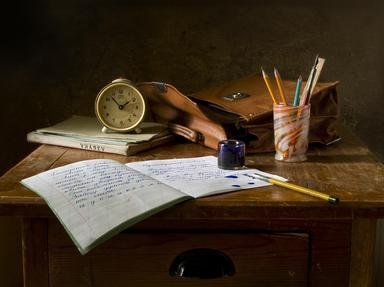Quiz Answer Key and Fun Facts
1. In 1782 the Montgolfier brothers began experimenting with small balloons filled with hot air. What did they initially believe made the balloons rise?
2. The first people to travel in a free-flying gas balloon were Professor Jacques Alexandre Charles and Marie-Noel Robert.
3. Professor Challenger tried to construct a gas balloon in the book "The Lost World". What was the balloon's envelope made from?
4. In 1785 Jean-Pierre Blanchard and John Jeffries were the first to cross which body of water by balloon?
5. In the book "The Wonderful Wizard of Oz", Dorothy and the Wizard planned to escape from Oz by hot-air balloon but it took off with only the Wizard on board. What prevented Dorothy from joining him?
6. Which part of the world did Phileas Fogg and his companion(s) cross by balloon in the book "Around the World in Eighty Days"?
7. The first balloon to fly nonstop across the Atlantic landed in a field southwest of Dublin in Ireland.
8. Who was/were the first to fly nonstop around the world by balloon?
9. Two people were lifted to the height of 18,325 feet by 14,000 party balloons in 2001. What were the balloons filled with?
10. Which fictional character composed and sang a song while floating below a balloon?
Source: Author
misstified
This quiz was reviewed by FunTrivia editor
Nannanut before going online.
Any errors found in FunTrivia content are routinely corrected through our feedback system.


